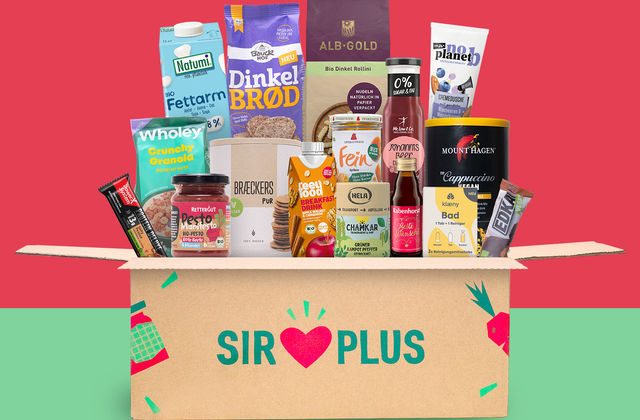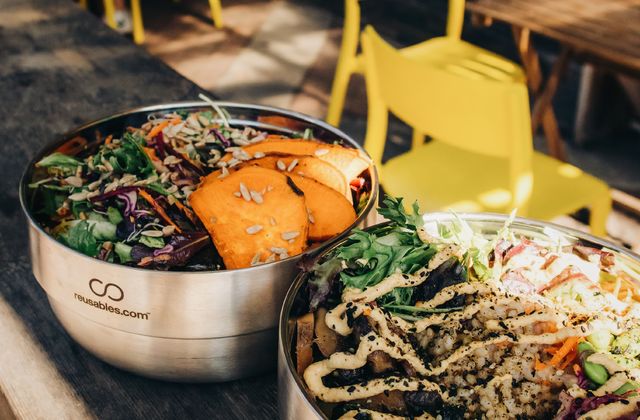What is it? Oatly produces plant-based milk and dairy alternatives made from oats. Their oat-based products are intended to be a more sustainable alternative to conventional dairy products, with a lower greenhouse gas, land use and water usage footprint (Oatly, 2017). The company aims to “leave a positive impact on the planet and strive to work towards circular systems and in a resource efficient manner” (Oatly, 2017, p. 19).
Why is this important? Oatly claims there is a “broken food system” with high negative environmental impacts and bad nutrition (Oatly, 2017, p. 10). The company’s 2017 Sustainability Report highlights that animal production accounts for nearly 15% of global greenhouse gas emissions (Oatly, 2017). Additionally, 80-85% of nitrogen losses in European agriculture and around 30% of biodiversity loss on land can be linked to animal and livestock production (Oatly, 2017). These impacts are specifically high considering that those products merely account for around 18% of globally consumed calories (Oatly, 2018).
Main resource strategy: Narrowing the loop through decreasing the impact per product made. Oatly works on reducing energy and water use, eliminating waste and cutting greenhouse gas emissions (GHG). Specifically, they produce a product that is a less GHG-intensive alternative to dairy products (Oatly, 2017). Additionally, the company prioritizes waste avoidance, for instance through packaging design that ensures no food is leftover in the packaging (Bocken et al., 2020).
Other resource strategies: Closing the loop through recycling by-products of the production into pig feed, biogas and fertilization in fields (Oatly, 2020b); slowing the resource loop through creating products with a long shelf-life (Bocken et al., 2020); regenerating through using renewable energy sources.
Business model aspects:
- Value Proposition: Depending on the geographical market, products and product sizes offered by Oatly differ but the offer across the company ranges from oat drinks, over on the go drinks, oatgurt and cooking ingredients to ice cream (Oatly, 2020d). The company aims to “make it easy for people to turn what they eat and drink into personal moments of healthy joy without recklessly taxing the planet’s resources in the process” (Oatly, 2020a), thereby offering the value of lower environmental impact and lower associated guilt. However, they also refer to the importance of creating “delicious” products (Oatly, 2017, p. 15).
- Value Creation & Delivery: Oatly products are based on a technology developed by scientists in Lund, Sweden, in the 1990s that enables a breakdown of oats into liquids through the use of enzymes (Oatly, 2020c). They currently sell their products to customers in 25 countries, including retail and the food service industry (Oatly, 2020c). They own three production sites, in Landskrona (Sweden), Millville, New Jersey (USA) and Vlissingen (Netherlands) which cover approximately 40% of customers’ demand while the other 60% are supplied by partners (Oatly, 2020c).
- Value Capture: The value is captured through product sales of their oat-based dairy alternatives. The company has experienced strong growth, with an increase in sales of 88% for 2019 (Oatly, 2020c).
Strategies for degrowth/ sufficiency (based on sufficiency strategies from Niessen & Bocken, 2021): Oatly’s sufficiency strategies have been analysed in detail by Bocken et al. (2020).
- Awareness-raising: Oatly are vocal in their campaigning for plant-based foods. They hope to create change in society: “We believe the best way for us to contribute is to introduce more people to the advantages of a plant-based diet. The more sustainable and better tasting products we make, the easier it will be for people to shift their consumption patterns and when they do, the planet and all the humans and animals that live here will benefit” (Oatly, 2018, p. 36).
- Green alternative: Bocken et al. (2020) show that the company utilized several strategies to drive sufficiency, including creating long shelf-life products and avoiding waste, but the most articulated strategy is ‘Encouraging substitution of animal-based products’ (Bocken et al., 2020). In the 2017 Sustainability Strategy, Oatly point out their aim was to change eating habits in order to tackle an overexploitation of natural resources and ecosystems.
Degrowth: In terms of company growth, as stated previously, the company and its sales have been growing considerably (88% increase in sales in 2019). Nevertheless, the company openly discusses its future growth trajectory and what ‘sustainable growth’ could mean. They conclude that their growth is “fully sustainable” (Oatly, 2018, p. 84), as they supply products that are more sustainable than animal-based alternatives, and they intend to continue growing (Oatly, 2018).
Business model experimentation practices: Originally developed by researchers in Lund, Sweden, that were looking for non-dairy alternatives for lactose intolerant people, Oatly have experimented several times both with their branding and products. Marketed as slimming products and lactose-free alternatives at first, the company rebranded around 2009 to highlight its sustainability benefits (Ledin & Machin, 2020). The company also develops new products, such as oat milk specifically for use in coffee which the company recognizes as “filling a need” (Oatly, 2017, p.16). Oatly also experiments on a larger scale, for instance trying to develop new food product uses for their oat bran by-product in an innovation project funded by Vinnova with SEK 1,727,500 (Oatly, 2018).
Tools, methods and approaches used: Oatly has used life cycle assessments for some of their products (Oatly, 2017; Oatly, 2018).
Sustainability outcomes: In 2017, Oatly estimated that its oat drink can reduce greenhouse gas emissions by 80%, land use by 79% and energy consumption by 60% compared to a same size portion of cow’s milk (Oatly, 2017). The company also continually works on reducing its drinks’ climate footprint through reduced water and energy use. Between 2013 and 2017, the greenhouse gas emissions footprint of the 1.5% fat oat drink were reduced by 33% (Oatly, 2018).
Sources:
Oatly (2017). Oatly Sustainability Report 2017. Oatly: Malmö, Sweden.
Oatly (2018). Oatly Sustainability Report 2018. Oatly: Malmö, Sweden.
Oatly (2020a). About Oatly. Accessed 10 December 2020 at: https://www.oatly.com/int/about-oatly
Oatly (2020b). Leftovers. Oatly Sustainability Report 2020. Accessed 10 December 2020 at: https://sustainability.oatly.com/
Oatly (2020c). Oatly who?. Oatly Sustainability Report 2020. Accessed 10 December 2020 at: https://sustainability.oatly.com/oatly-who/
Oatly (2020d). Products. Accessed 10 December 2020 at: https://www.oatly.com/int/products
***
About project Circular X
Project Circular X is about ‘Experimentation with Circular Service Business Models’. It is an ambitious research project funded by the European Research Council (ERC) which supports top researchers from anywhere in the world. Project CIRCULAR X runs from 2020-2025. The project is led by Principal Investigator (PI) Prof Dr Nancy Bocken, who is joined by a multidisciplinary team of researchers at Maastricht Sustainability Institute (MSI), Maastricht School of Business and Economics, Maastricht University. The project cooperates with businesses who want to innovate towards the circular economy.
Project Circular X addresses a new and urgent issue: experimentation with circular service business models (CSBMs). Examples of such new business models include companies shifting from selling products to selling services and introducing lifelong warrantees to extend product lifetimes. However, CSBMs are far from mainstream and research focused on experimentation is little understood. The research aims to conduct interdisciplinary research with 4 objectives:
- Advancing understanding of CSBMs; their emergence and impacts
- Advancing knowledge on CSBM experimentation
- Developing CSBM experimentation tools
- Designing and deploying CSBM experimentation labs
Funding source
This project has received funding from the European Research Council (ERC) under the European Union’s Horizon 2020 research and innovation programme, grant agreement No. 850159.
Using this information
When you cite this publication, please use the following source:
Circular X. (2020) Case study: Oatly. Accessed from www.circularx.eu



